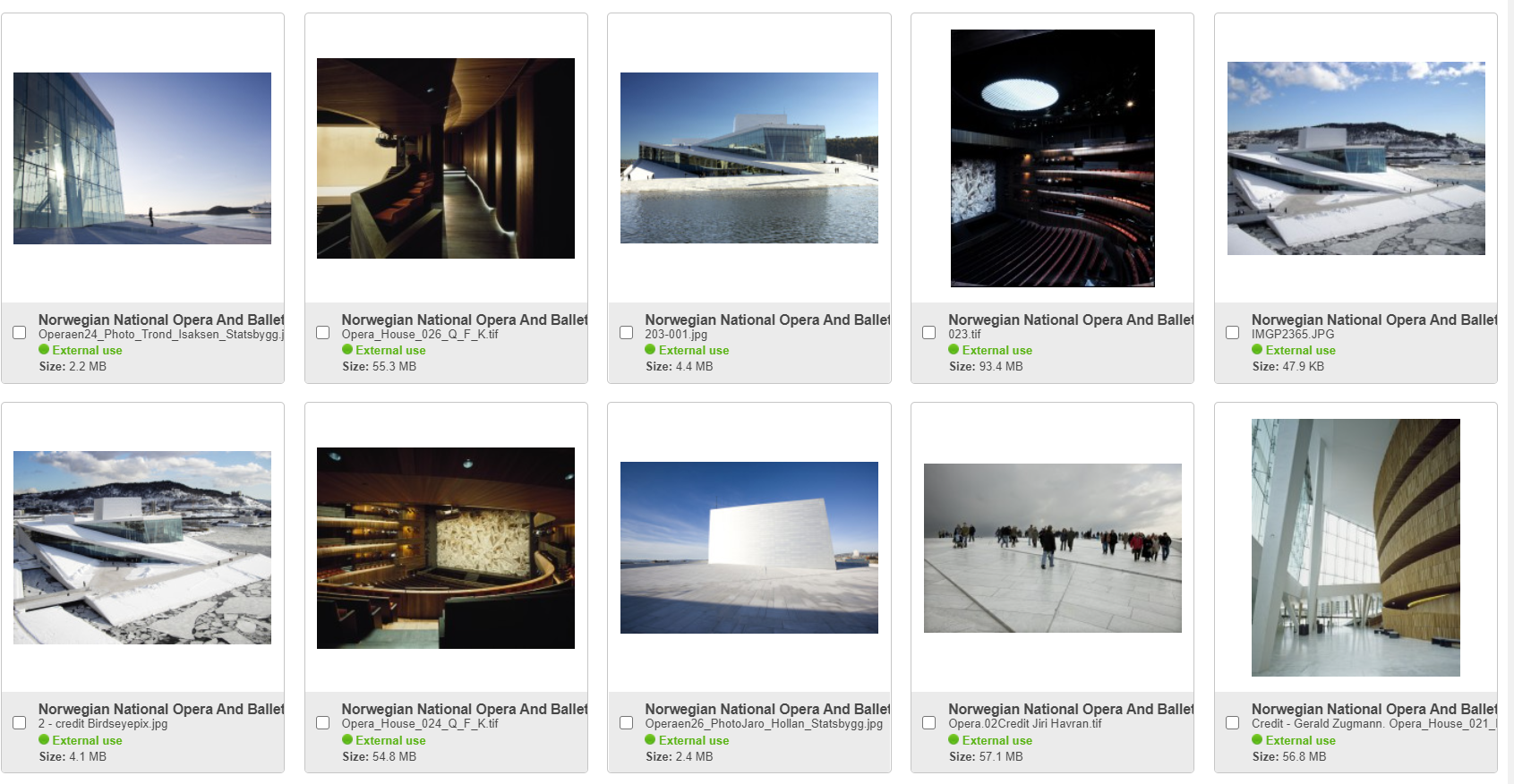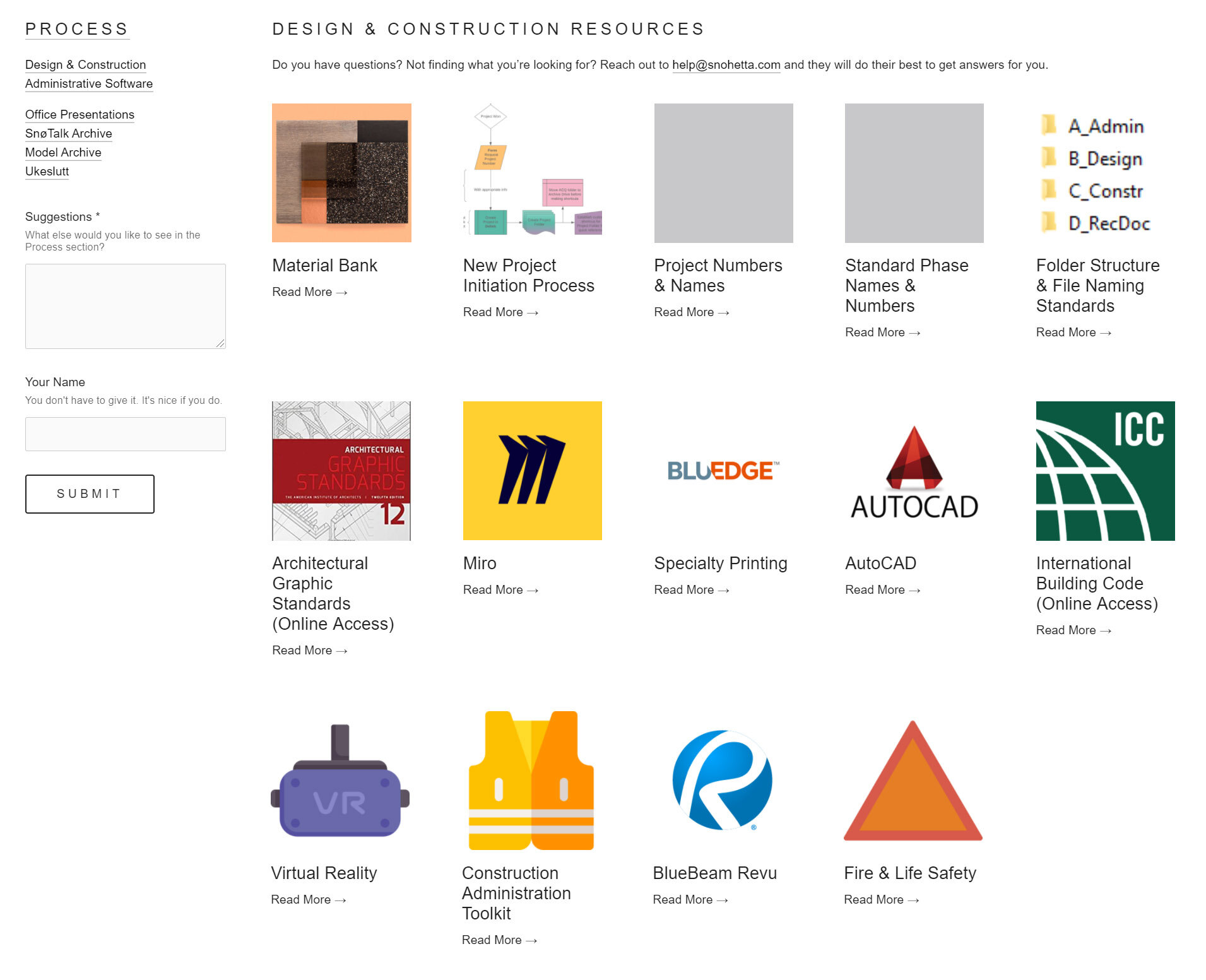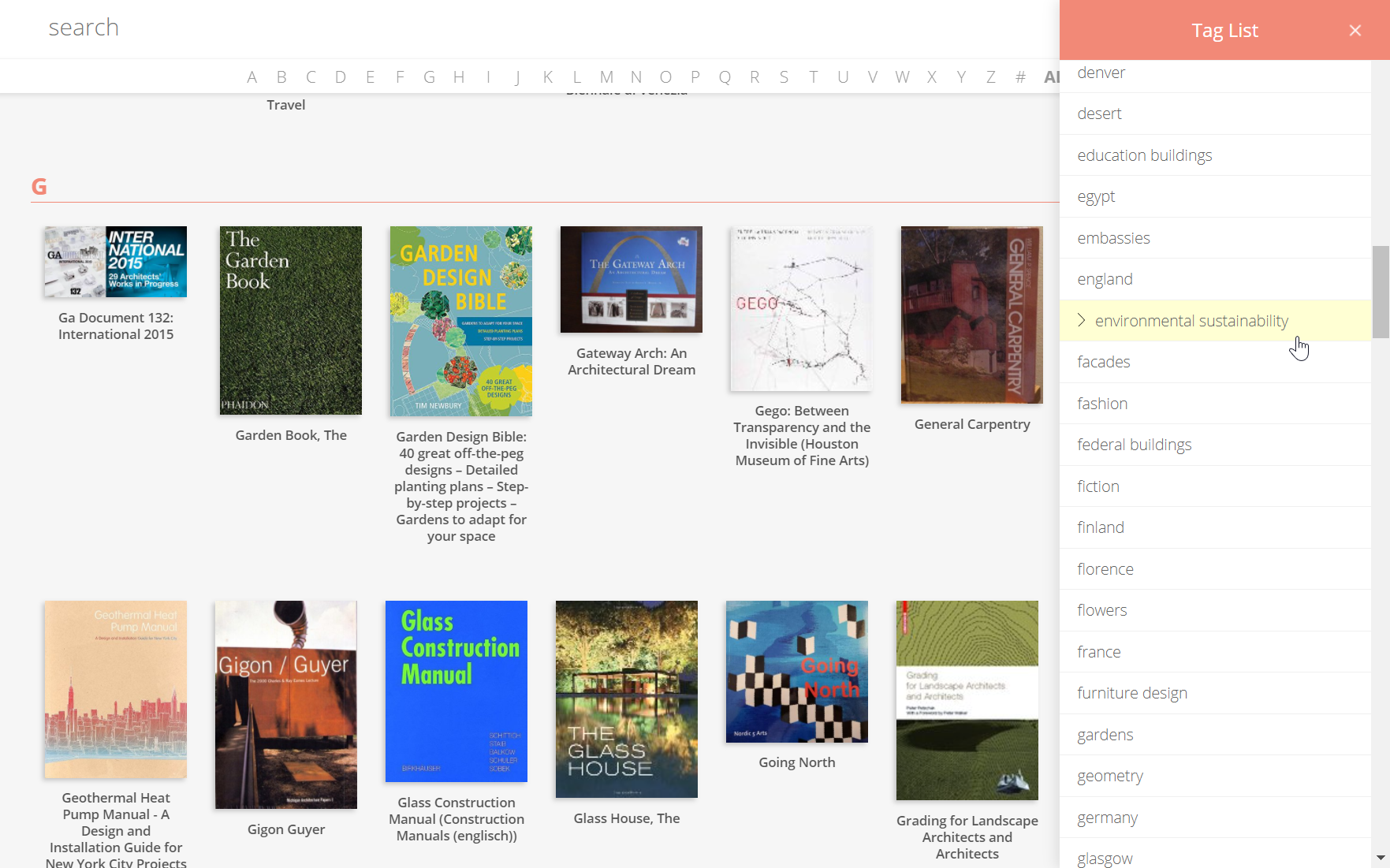Digital Asset Management
︎
Designers utilize seemingly infinite amounts of visual material for internal and external use, meaning an enormous amount of time is wasted repeatedly searching for images. With an asset management program tailored to your existing workflows, your teams can find exactly what they’re looking for while also providing more opportunities for intentional browsing.
 I have worked to set up and maintain metadata-rich image collections via OpenAsset, the industry standard DAM tool for Architecture. Note that there are other more budget-friendly alternatives to consider.
I have worked to set up and maintain metadata-rich image collections via OpenAsset, the industry standard DAM tool for Architecture. Note that there are other more budget-friendly alternatives to consider.Text File Management
︎
It’s not just your Communications team that is creating an incredible amount of text over the years: from presentations, project proposals, bios, award submissions, press releases, essays, etc., every studio needs a system to organize this wide range of writings so they can be utilized in the future.
The solution is a filterable library of text on a cloud-hosted platform with ease of submission with a simple form intake with flexible back-end viewing. From now on, the firm can refer back to all types of text and know which is up-to-date and what was submitted where, when, and by whom.
Storytelling & Legacy-Building
︎
Whether you’re preparing for a monograph, applying for a firm of the year award, or reaching a milestone in your studio’s history, take some time to crystalize your legacy and document the narrative of your project history. I’ve worked on projects ranging from creating boilerplate text for your communications team, refinement of project writing, or workshops to develop your firm mission statement.

It’s important to revisit your mission as a studio—a pivotal award or monograph could be just around the corner. I can help to inform this process and organize your thoughts and design assets.
Project Database
︎
Information about your past projects is invaluable, but so is your time. With a structured project database, you can stop digging through old project folders and know exactly where specific details are. Organize the project information based on what your teams search for and why to easily provide references to solve problems mid-design.
I have assisted firms in creating custom in-house solutions in addition to populating out-of-the-box database platforms for the AEC industry. Setting up project databases is often a major challenge for design studios, but it’s never too late to start a with new system to house your information. In every scenario, you will see increasingly efficient workflows, especially for your new business and communications teams.
Studio Intranet
︎
An Intranet (internal website) is invaluable for operations and design workflows, especially for firms with dispersed teams. The Intranet structure is designed by how your teams search for information, what existing resources you may have, and what you’re interested in investing in. Streamline your onboarding processes and offer a centralized location for internal information.



Model Archive
︎
Your models might be in a museum one day! Physical models are extremely important for the legacy of your work and they’re useful for active design work, especially in concept phases. Models and physical studies are often fragile and stored in places where they are exposed to a variety of elements, so accessible offsite archival storage is a great opportunity to preserve delicate pieces for decades while still being able to find what you’re looking for.
 To keep the life of the model alive and not just locked away indefinitely, I offered a searchable library tagged by project, key elements, material, etc. so that staff can browse casually or find what they’re seeking with ease.
To keep the life of the model alive and not just locked away indefinitely, I offered a searchable library tagged by project, key elements, material, etc. so that staff can browse casually or find what they’re seeking with ease.Reference Library
︎
Naturally, most design studios accumulate an impressive breadth of books and technical guides. Turn these haphazard stacks of books into a functioning library. Staff can casually browse the stacks for unstructured inspiration or quickly find exactly what they’re seeking through an online catalog and check-out system. Tag books by subject for easy discovery.
 Free cloud-based library catalog platforms pull metadata from a book’s ISBN. This was a quick and easy solution to organize piles of books.
Free cloud-based library catalog platforms pull metadata from a book’s ISBN. This was a quick and easy solution to organize piles of books.